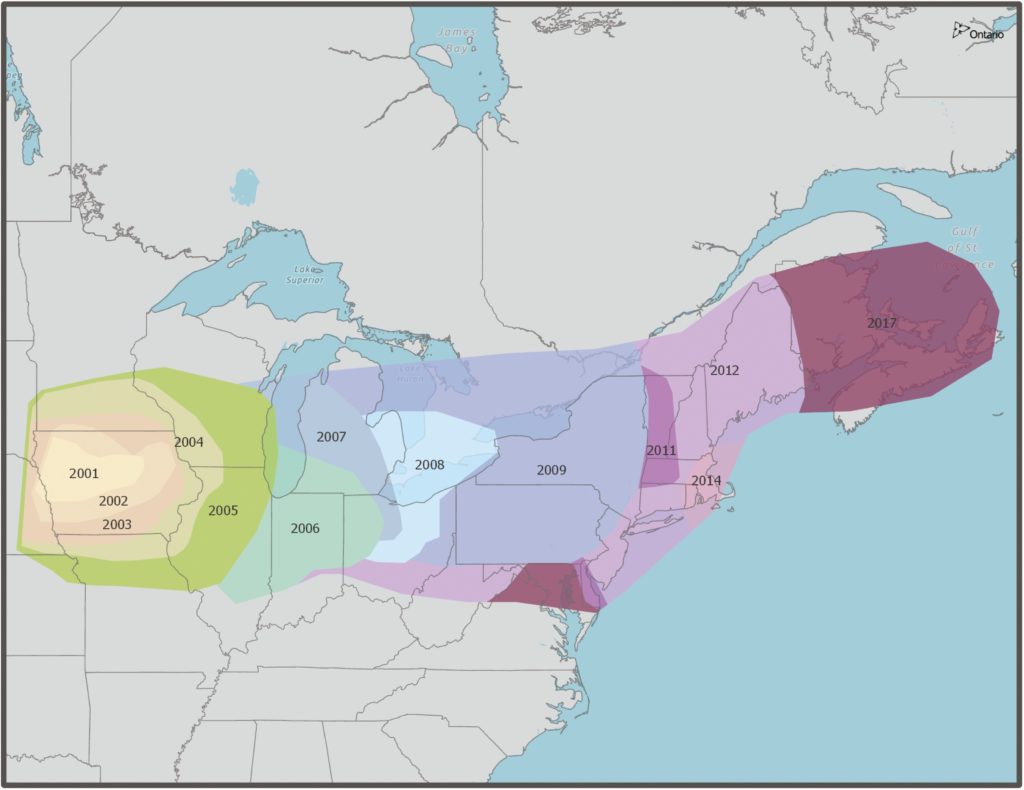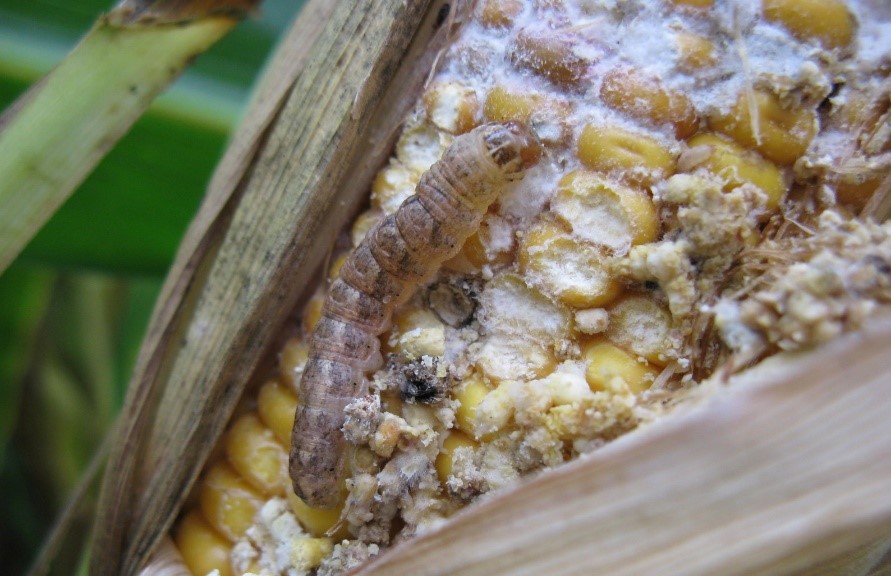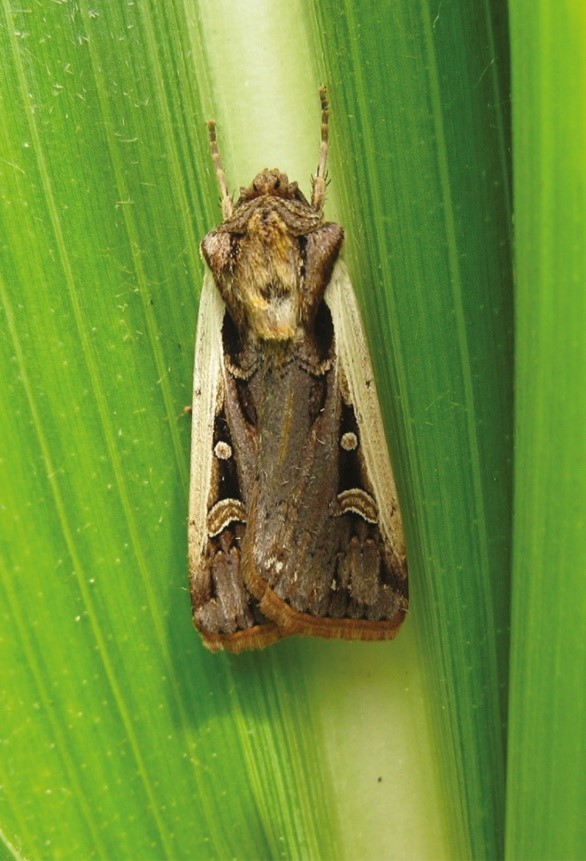Western bean cutworm (Striacosta albicosta) is a native North American insect that, at high levels, can be a pest of corn and dry beans. However, the way they feed is different than some of the other cutworms many may be familiar with. Western bean cutworm feeds on the reproductive parts of plants (corn tassel, silks, and kernels, or dry bean pods and seeds). This can result in yield loss, and spread ear mold. In Ontario, injury by western bean cutworm has been shown to increase mycotoxin production in grain corn.
Range Expansion: The historical geographic range of the western bean cutworm covered the western Great Plains states including Colorado, Nebraska, and Wyoming but, over the past two decades, its distribution has been more easterly rather than north to the prairies. A report from the 1950s of western bean cutworm in Alberta has instead been confirmed as a misidentification of another species. Currently, it has not been detected in the Canadian prairie provinces. Since 1999, the geographic range of the western bean cutworm has rapidly expanded eastward across the U.S. Corn Belt and eastern Canada. Western bean cutworm adults have been collected in 22 additional states and provinces since 1999, spreading from western Iowa to the east coast of the United States and Canada. It was first found in Canada in Ontario in 2008. Keep an eye open for this insect when scouting for crop pests in corn or dry beans this summer.

Appearance and monitoring tips:
Larvae:
• There are six stages (instars) of the larvae, and appearances vary.
• Older larvae are a light tan colour, with an orange head. The pronotum (the shield-like structure just behind the head) has two broad dark brown stripes.
• You may find young larvae on the silks of corn. Older larvae may be on the ears of corn, but you may have to peel back the husks to find them (Fig. 2).

Adults:
• Each forewing has a white or tan band running along the edge or margin of the wing (Fig. 3). Inside this band are 2 distinctive markings: a brown circle and a brown kidney bean shape, both surrounded by a tan border.
Note – Other moths across the Canadian prairies, such as redbacked cutworm, have similar markings.

Please help – When monitoring in the Canadian prairies, adults or larvae suspected to be western bean cutworm can be directed to your provincial entomologist for species verification. New and confirmed sightings of this species are important and will help mobilize research and pest management strategies.
Additional information on western bean cutworm can be found in the publication “Western Bean Cutworm” by the Canadian Corn Pest Coalition: https://cornpest.ca/corn-pests/western-bean-cutworm/
Did you know? Bt corn with the Vip3A protein effectively controls western bean cutworm, but some of the Bt corn products for European corn borer will not.
Reference:
Ecology and Management of the Western Bean Cutworm (Lepidoptera: Noctuidae) in Corn and Dry Beans—Revision With Focus on the Great Lakes Region. 2019. J. L. Smith, C. D. Difonzo, T. S. Baute, A. P. Michel, and C. H. Krupke, Journal of Integrated Pest Management, Volume 10, Issue 1: 1-19.
